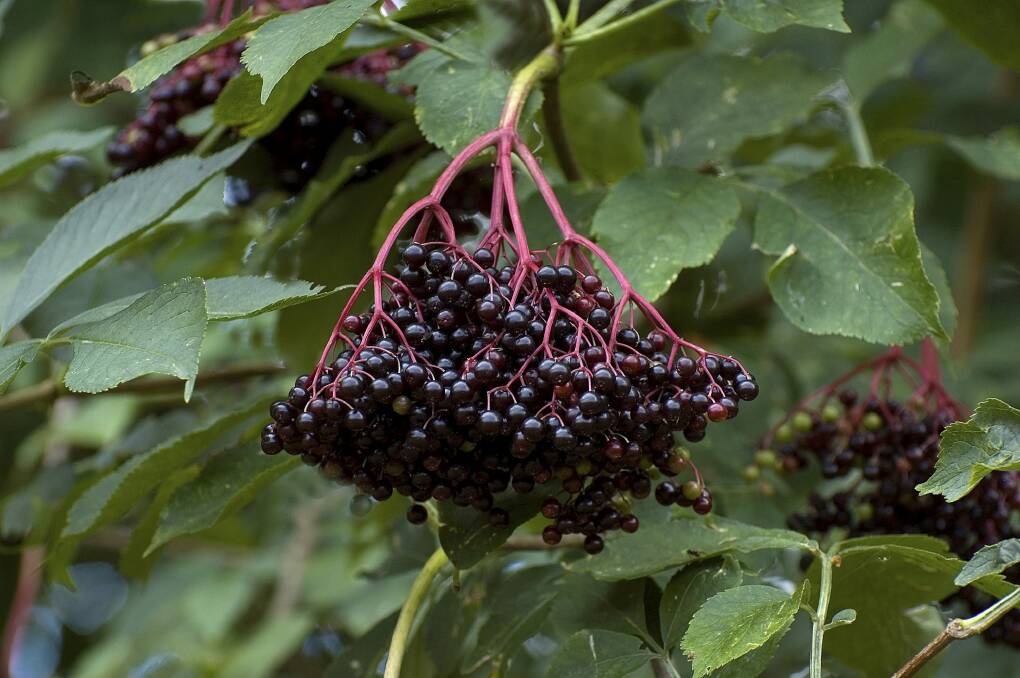We have just proved it conclusively. There was no witch in our elderberry tree. Which means that you can plant an elderberry in your garden without luring a witch to live in it or, alternatively, you can cut it down with impunity too.
Subscribe now for unlimited access.
$0/
(min cost $0)
or signup to continue reading
According to garden lore, you must apologise to the witch in your elderberry tree before you cut or prune it, and never cut it down.

We proved the absence of witch quite simply – Bryan grew tired of the elderberry sprawled by his shed and took the chainsaw to it before I knew anything about it. Two minutes of 'brrrrrrrrmm' and it was gone. And, no, it didn't bleed red sap, as another legend says it will, too. Nor has an abundance of elderberries protected the valley from lightening.
Actually the elderberry tree has only temporarily gone from the shed. Next spring the roots will probably sprout and we will have a neater and lusher elderberry bush, which Bryan will love, or at least he will love the elderberry jelly I make from the fruit.
Elders are fast growing and incredibly hardy, surviving heat, drought and frost, one of the great pioneer plants for your garden.
They are also relatively small, about two metres high and wide- only a short slim witch would be comfortable in one.
Sadly elders pioneer all too well in some areas and become weeds – be careful planting them near bushland and look out for 'volunteers' because the best-fruiting elderberries are also the ones with the most weed potential. Many elders won't fruit at all. They produce massive great white panicles of flowers in spring, which turn to a deep cream and smell of honey, but don't set fruit. If you don't care for elderberry jelly, this is all they need to do, though the birds will be disappointed as many birds adore elderberry.
Which is what spreads the weeds. Birds eat fruit, birds fly away, bird droppings fall to the ground, seeds in droppings germinate – and you have a weed, the offspring of an elderberry tree that tends to produce fruit.
I wish I could tell you a sure way to know if an elder will set fruit or not, but I don't know of one. Some fruit. Some don't. It was once believed that they need chilling to fruit, but the first heavy bearing elder I ever saw grew in Townsville. A cutting from a good (or bad) fruiter is the best bet for getting one of the same. Snap off a bit of wood, as close to the base as you can. If it snaps instead of bends, it will probably grow if you plant it in sand or potting mix or even a pot of soil (as long as that soil isn't heavy clay more suitable for a brickworks or pottery) and keep it moist and in dappled light. Don't plant it out though until it has at least tripled in size.
A year later, you may get berries. But if one test is enough to substantiate our conclusions, there will be no witches in your tree whatsoever.
This week I am:
- nursing a bung knee and not kneeling to plant the seedlings that are almost hand-length now and should have been in the ground weeks ago … and may never get there – but there is spring's planting to look forward to;
- not pulling out the grass that is invading the vegie garden, either, for the same reason – but winter is coming, which will halt the invasion for a while and there are real advantages to living in a climate where growth stops in mid-winter and sometimes in a dry mid-summer too (I will remind myself of that consolation this July when I dream of picking fresh tomatoes);
- photographing the cardamon berries – at least I think they are cardamom berries, but I will need to wait till they dry to make sure they are the correct plant: first I'll test the smell, then the taste and if that is not followed by a very deceased or ill gardener, they are probably the real thing;
- still cooking apples and eating apples. The last apple crumble was so good that it was guzzled by Bryan and the guests before I got back from fetching the cream – this is the best time of year to pick cooking apples and the best time of year to make and eat apple cake and apple crumble.
- watching the Tahitian limes turn yellow and soft, and picking the second lot of avocadoes – the first were delicious, not quite oil rich enough to be perfect yet, but excellent in guacamole or on toast and as one tree gives about two hundred fruit a year, or more in hot climates, you may never need the expense of ordering smashed avocado on toast from a hipster café again;
- greeting the whip bird as it begins to greet winter with its call; and
- exulting in a new seedling dahlia which decided to bloom this year – it is yellow with two pink rings around the edge of the petals and the centre, which sounds garish but is actually subtle and quite gorgeous. And the black-tailed wallaby has finally finished eating the buds of the red flowered ones – it is slightly stonkered with all the fresh grass. So at last we have a decent display – the dahlias have finally had the summer deep soaking they need to look stunning.
f. @jackiefrenchauthor
t. @jackie_french_
i. @jackie_french_

